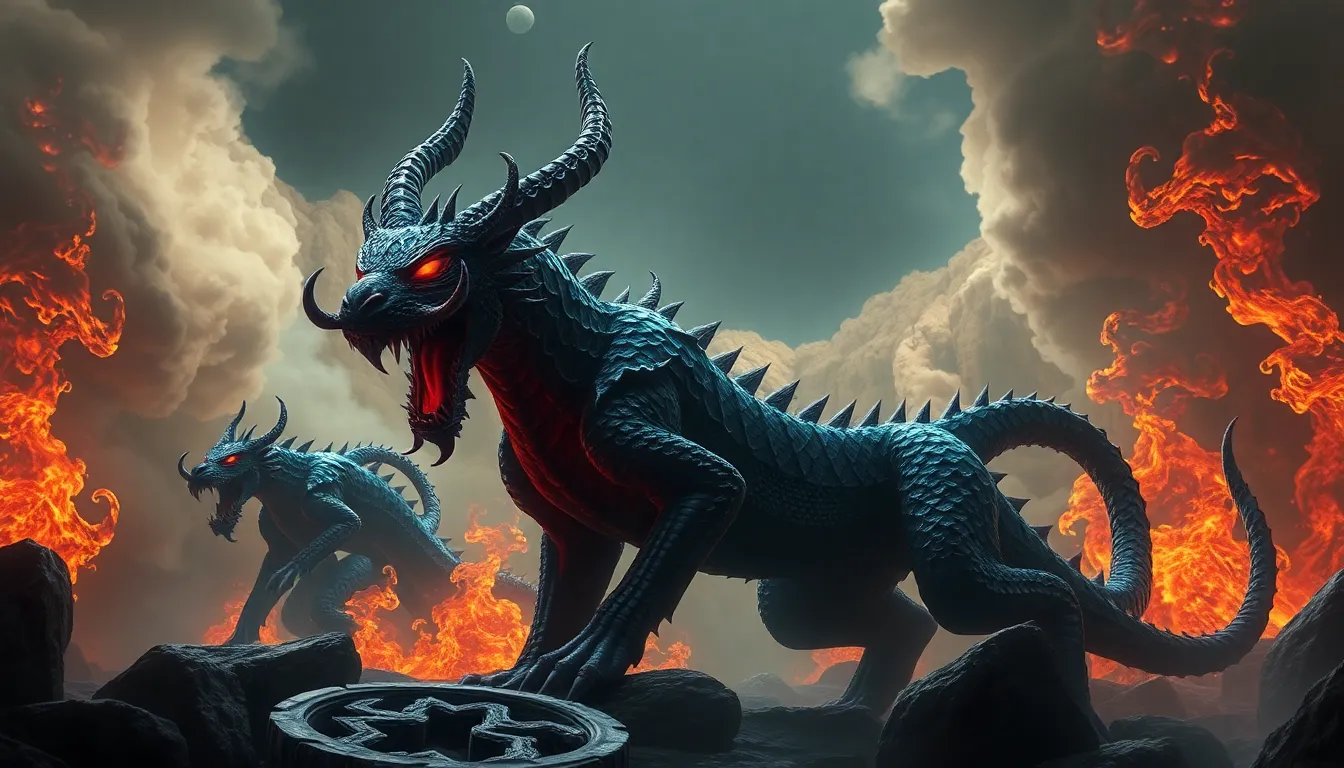The Cosmic Tapestry: Myths of the Stars and Their Meanings
I. Introduction to Cosmic Myths
Cosmic myths serve as a bridge between humanity and the vast universe above us. These tales, rooted in the observations of celestial bodies, have been a significant part of cultural narratives across the globe. They offer explanations for natural phenomena, embody cultural values, and connect generations through shared stories.
The stars, with their twinkling lights and mysterious formations, have inspired countless myths that reflect humanity’s quest for understanding. This exploration delves into the meanings behind these star myths, revealing their importance in shaping human experience and identity.
II. The Historical Context of Star Myths
Throughout history, ancient civilizations looked to the night sky for guidance and inspiration. From the Egyptians to the Mayans, the interpretations of celestial events played a critical role in shaping their worldviews.
- Ancient Civilizations: Various cultures created elaborate constellations, often linking them to their gods and heroes.
- Astrology’s Role: Astrology emerged as a way to understand and predict earthly events through the alignment of stars.
- Cultural Stories: Celestial events like eclipses and meteor showers often inspired mythological narratives, explaining their significance in the context of human life.
III. Major Constellations and Their Myths
Certain constellations have become emblematic of cultural beliefs and stories. Their myths offer insights into the values and fears of the societies that created them.
A. Orion: The Hunter and His Significance
Orion, recognizable by his belt of three stars, is depicted in various cultures as a mighty hunter. In Greek mythology, he is often associated with the struggle against beasts and the challenges of nature.
B. Ursa Major and Ursa Minor: The Bear and the Myth of Transformation
The two bear constellations are steeped in myths of transformation and survival. In some Native American cultures, they are seen as representations of a bear and her cubs, emphasizing themes of maternal care and protection.
C. Cassiopeia: The Queen and the Lessons of Hubris
Cassiopeia, the vain queen, serves as a cautionary tale against pride. Her story illustrates the consequences of hubris, reminding us of the balance between self-confidence and arrogance.
IV. The Role of Stars in Cultural Identity
Stars have long been integral to the cultural identities of indigenous peoples. They often hold spiritual significance and connect communities to their land and heritage.
- Indigenous Star Lore: Many indigenous cultures have rich star lore that reflects their relationship with the land.
- The Milky Way’s Significance: Across cultures, the Milky Way is often seen as a pathway to the afterlife or a bridge between the physical and spiritual worlds.
- Moral Lessons: Star myths frequently convey important lessons, teaching values such as respect for nature and community cohesion.
V. The Impact of Astronomy on Mythology
As humanity’s understanding of the cosmos evolved, so too did the interpretations of star myths. The transition from mythological explanations to scientific understanding has reshaped cultural narratives.
- Myth to Science: The shift towards a scientific perspective has led to a decline in traditional star myths, but many still find value in the stories.
- Modern Influences: New astronomical discoveries continue to inspire adaptations of ancient myths, blending old narratives with new knowledge.
- Case Studies: For instance, the story of the Pleiades has been reassessed in light of its astronomical significance, revealing deeper connections to agricultural cycles.
VI. The Psychological and Spiritual Dimensions of Star Myths
Star myths tap into the collective unconscious, presenting archetypal themes that resonate with human experience. The constellations serve as touchstones for our spiritual journeys.
- Archetypes: Many star stories embody universal archetypes, reflecting themes of heroism, love, and sacrifice.
- Spiritual Guidance: Constellations often provide a sense of direction and purpose, guiding individuals through life’s challenges.
- Personal Reflections: Many people find personal meaning in star myths, using them as metaphors for their own experiences and struggles.
VII. Comparative Analysis of Star Myths Across Cultures
By examining star myths from various cultures, we can identify both similarities and differences that reveal the shared human experience.
- Similarities: Many cultures feature myths that explain the origin of constellations, often involving gods or mythical figures.
- Differences: Variations in stories reflect unique cultural values and environmental contexts.
- Lessons Learned: Comparative analysis highlights common moral lessons, such as the importance of humility and respect for nature.
VIII. The Influence of Technology on Star Mythology
In the digital age, technology has transformed our relationship with the stars and their myths.
- Changing Perceptions: Advances in technology have provided new ways to observe and understand celestial phenomena, altering our traditional narratives.
- Digital Media: The internet and social media have revived interest in ancient star myths, allowing for broader sharing and reinterpretation.
- Future of Star Myths: As space exploration continues, new star myths may emerge, blending ancient wisdom with contemporary discoveries.
IX. Preserving Star Myths for Future Generations
The preservation of star myths is vital for maintaining cultural heritage and fostering a sense of connection to the universe.
- Storytelling: Oral traditions are crucial for keeping myths alive, ensuring they are passed down through generations.
- Education Initiatives: Programs aimed at teaching star myths in schools can instill appreciation for the cosmos in younger generations.
- Role of the Arts: Literature, art, and media serve as important tools for preserving and revitalizing cosmic myths.



